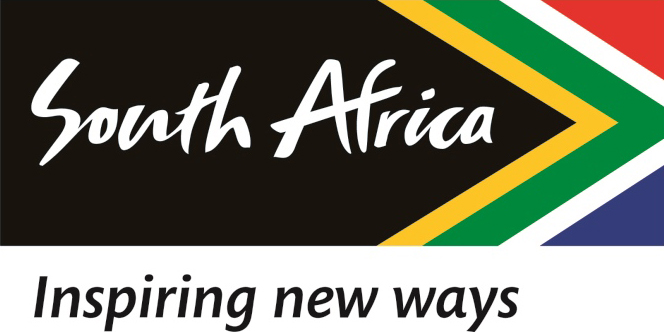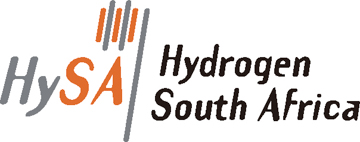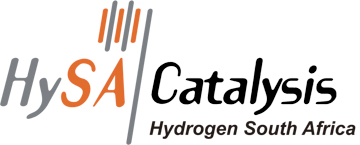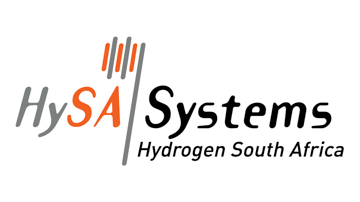
FC Expo 2023, Tokyo Japan 燃料電池展


南アフリカ共和国科学技術省は、水素・燃料電池技術(HFCT)研究開発・イノベーション(RDI)戦略のための国家プロジェクト「HySA」(ハイサ)を立ち上げました。
HySAの全体的な目標は、南アフリカにおける水素と燃料電池技術のバリューチェーンに沿ったイノベーションを開発し、導くことです。HFCT RDI戦略の全体的なビジョンは、南アフリカで採掘された鉱物、特に白金族元素(PGMs)に基づく新しいハイテク産業の開始を通じて、富と雇用と知的財産権の創出をもたらすことです。

|

|

|
The Department of Science and Technology of South Africa developed the National Hydrogen and Fuel Cells Technologies (HFCT) Research, Development and Innovation (RDI) Strategy. The National Strategy was branded Hydrogen South Africa (HySA).
The overall goal of HySA is to develop and guide innovation along the value chain of hydrogen and fuel cell technologies in South Africa. The overall vision of the HFCT RDI strategy is to bring about wealth, jobs and IPR creation through the initiation of new high-technology industries based on minerals found on South African soil, especially Platinum Group Metals (PGMs)

水素技術における電気化学反応は、貴金属を多く含む触媒によって促進されます。UCTのHySA触媒プログラムの主な焦点は、高性能の担持および非担持IrO2触媒を研究、製造、スケールアップすることです。触媒性能と耐久性は、新規かつ費用対効果の高い技術を用いた商業的に競争力のある性能を示しています。このプログラムでの触媒開発は、南アフリカの鉱物選鉱を強力にサポートします。
プロトン交換膜式水電解槽用の商業的に適切な白金族金属触媒コーティング膜(3層MEA)の開発に取り組んでいます。本研究では、新規触媒材料の基本的な物理的および電気化学的特性を利用し、これらのデバイスのための次世代材料およびコンポーネントの合理的な設計を加速することに重点を置いています。
燃料電池の心臓部には膜電極接合体(MEA)があります。これらの部品にはエネルギー生産を可能にする触媒が含まれています。工業的な目標を達成するために最適化され、MEAの構造・性能・耐久性などの特性を研究しています。増大するエネルギー需要に対応するため、研究・技術開発は、信頼性が高く費用対効果の高い方法論を用いた製造方法に着目しています。Catalyst development for Hydrogen Production The electrochemical reactions in hydrogen technology are facilitated by precious metal rich catalysts. A key focus of the HySA Catalysis programme at UCT is to produce, study and scale high performing supported and unsupported IrO2 catalysts. The performance and durability of the catalysts show commercially competitive performance using novel and cost-effective technologies. Catalyst development in this program strongly supports South African mineral beneficiation.
Electrolyser membrane electrode assemblies The program works on the development of commercially relevant platinum group metal catalyst coated membranes (i.e. 3-layer MEA) for proton exchange membrane water electrolysers. The work is focused on exploiting the fundamental physical and electrochemical properties of novel catalytic materials to accelerate the rational design of next generation materials and components for these devices.
Fuel Cell Membrane Electrode Assemblies At the heart of the fuel cell is the Membrane Electrode Assembly (MEA). These components contain the catalysts which enable energy production. The structure-performance and durability properties of the MEAs are studied and optimized to meet industrially relevant targets. To meet the growing energy demand, research and technology development is focused on manufacturing methods using reliable and cost-effective methodologies.

ハイサ・システムズは南アフリカにある水素・ 燃料電池技術に関する 3 つの国立コンピテンス センターの 1 つです。当センターは同国ケープ タウンにある西ケープ大学を拠点としており、 水素・燃料電池の製品開発を支援するために、 最新鋭の機器を備えた世界クラスの研究設備を 有しています。当センターは金属水素化物技術 を利用した水素貯蔵合金、キャニスター、コン プレッサー、燃料補給ステーションなどの研究 開発に重点を置いています。
物流車両用の燃料電池パワーモジュールの試 作機を開発し、2016 年には燃料電池フォーク リフトと燃料補給ステーションの実地デモの 実施、バスやトラック向けの長航続距離用の 30kW 燃料電池パワーモジュールのプラントバ ランス設計を開発しました。完全燃料電池出力 の酷使に耐えるアプリケーション(120kW 燃 料電池パワーモジュール)を海外パートナーと、 燃料電池スクーターを南アフリカ郵便局と共同 開発しました。その他に燃料電池ゴルフカート、 自転車、三輪車、12kW 熱電併給システム、バッ クアップ電源システムなどを開発しました。
HySA Systems is one of three national centres of competence on hydrogen and fuel cell technologies in South Africa. HySA Systems is based a University of the Western Cape in Cape Town, South Africa. HySA Systems have world-class laboratories with state-of-the -art equipment to aid the development of Hydrogen and Fuel Cell product development. HySA Systems R&D focus is to develop hydrogen storage alloys, canisters, compressors/ refuelling stations, all based on metal hydride technology. HySA Systems have developed prototype fuel cell power module for material handling vehicles and have demonstrated in the field fuel cell forklift and refuelling station in an industrial environment since 2016. HySA Systems has developed a balance of plant design for a 30kW fuel cell power module for range extender applications, mainly for buses and trucks. Currently HySA Systems is negotiating with an international partner to develop a fully fuel cell power heavy duty application (120kW fuel cell power module). HySA Systems has also developed and demonstrated a fleet of fuel cell scooters in collaboration with South African Post Office. Other prototypes/demonstrators include a fuel cell golf cart, bicycle, three wheelers, 12kWe combine heat and power system, a backup power system etc.
The HySA Systems Integration & Technology Validation Competence Centre, HySA Systems, hosted by the University of the Western Cape (UWC) and located at the South African Institute for Advanced Materials Chemistry (SAIAMC), and directed by Sivakumar Pasupathi , is one of three national Competence Centres that were initiated by the Department of Science and Technology’s National Hydrogen and Fuel Cell Technologies (HFCT) Flagship Project, also known as Hydrogen South Africa or HySA.
This long-term (15-year) Hydrogen and Fuel Cell Technologies (HFCT) Research, Development, and Innovation (RDI) strategy was officially launched in September 2008 by the Department of Science and Technology (DST) in South Africa. The overall vision of the HFCT RDI strategy is to bring about wealth, job and IPR creation through the initiation of new high technology industries based on minerals found on South African soil, especially Platinum Group Metals (PGMs).
HySA Systems, a Systems Integration and Technology Validation Competence Centre on HFCT was established in 2007 at the SAIAMC at the University of the Western Cape. The main objective with HySA Systems is to (i) develop HFC systems and prototypes, (ii) perform technology validation and system integration in three key HySA programmes: (1) Combined Heat and Power (CHP), (2) Portable systems and (3) Hydrogen Fuelled Vehicles (HFV). HySA Systems is also responsible for the development, prototyping, testing, validating and commissioning of the following key technologies: Membrane Electrode Assemblies (MEAs) for High Temperature (HT) (≥120 oC) Proton Exchange Membrane (PEM) fuel cells, HT-PEM fuel cell stacks, metal hydrides for hydrogen storage and compression, Li-ion batteries and system integration of Energy Storage Devices for domestic and automotive applications.
HySA Systems is an industry, technology and prototype development oriented Competence Centre, which has demonstrated on many occasions its ability to develop, build, commission and validate Energy systems.

HySA Infrastructure Centre of Competence(CoC)は、イリジウム系触媒を用いたCCM(触媒コーティング膜)やスタックなどの水電解装置(WE)コンポーネント、LOHC(液体有機水素キャリア)脱水素技術の研究開発におけるアフリカのリーダーです。また、NWUのHySAインフラセンターは、電気化学的水素圧縮(EHC)の研究をリードしています。
ノースウエスト大・触媒コーティング膜
NWUのHySA Infrastructure CoCは、グリーンアンモニアと水素に関する日本と南アフリカの共同プロジェクトSATREPSの南アフリカにおけるPI(主任研究者)です。
HySA Infrastructure CoCは、再生可能な水素の製造、貯蔵、配送、安全性に関する専門知識を有しています。私たちは、南アフリカで初めて、燃料電池車用の分配機能を備えた統合型オンサイト電解水素生成システムを開発しました。
HySAインフラCoCは、グリーン水素の試験と補給のための大規模な試験エリアを持つ唯一のHySAです。また、NWUのHySAは、トヨタ南アフリカからサポートを受けました。NWUのHySA Infrastructure CoCは、グリーン水素の製造、貯蔵、分配のためのコンテナを開発しました。
脱酸素のための水素
CSIRのHySA Infrastructure CoCは、材料と触媒の開発に重点を置いており、脱炭素化が困難な産業にも貢献できる可能性があります。このため、回収したCO2をメタノールに変換する触媒を開発しました。開発した触媒は、市販の触媒と同等の性能を持ち、時にはそれを凌駕することもあります。
ターコイズ水素製造
NWUの研究所がグリーン水素に注力しているのとは別に、CSIRではメタンの接触分解によりCOxフリーの水素を製造しています。メタンの供給源は、天然ガス(青色水素)または再生可能な原料であるバイオガス(ターコイズ色水素)である。現在までに開発された触媒は、水素濃度が最大93%で、残りは未反応のメタンだけです。
HySAインフラストラクチャーCoCは、海運業界における水素利用のためのIPHEタスクフォース(TF)の共同リーダーを務めています。TFの焦点は、海運産業における燃料としての水素とその誘導体の使用に適用される関連コードと標準を検討することです。HySAはまた、水素の安全な使用と流通を発展させるために、現地で様々な団体に参加しています。
Catalyst Coating Membrane (CCM) Laboratory at NWU
Catalyst Coating Membrane (CCM) Laboratory at NWU
HySA Infrastructure Centre of Competence (CoC) is an African leader in the research and development of water electrolyser (WE) components such as CCMs (catalyst coated membranes) with Iridium-based catalysts and stacks, as well as LOHC (liquid organic hydrogen carriers) dehydrogenation technologies. HySA Infrastructure Centre at NWU is also leading research in electrochemical hydrogen compression (EHC).
HySA Infrastructure Centre of Competence at NWU is a PI (principal investigator) in South Africa of the SATREPS joint project between Japan and South Africa on green ammonia and hydrogen.
HySA Infrastructure CoC has expertise in renewable hydrogen production, storage, delivery, and safety. We developed the very first in South Africa integrated on-site electrolytic hydrogen generation system with dispensing capabilities for fuel cell cars.
HySA Infrastructure CoC is the only HySA that has large pilot area for green hydrogen testing and refuelling. HySA at NWU has recently provided support to Toyota South Africa. HySA Infrastructure CoC at NWU developed a container for green hydrogen production, storage and dispensing.
Hydrogen for decarbonisation
HySA Infrastructure Centre of Competence (CoC) at CSIR has a large focus on material and catalyst development, that could help to decarbonize some hard to abate industries. For this reason, we have developed catalysts that focusses on converting captured CO2 to methanol.The developed catalysts have performances that match and sometimes outperform the available commercial catalysts.
Hydrogen for decarbonisation
HySA Infrastructure Centre of Competence (CoC) at CSIR has a large focus on material and catalyst development, that could help to decarbonize some hard to abate industries. For this reason, we have developed catalysts that focusses on converting captured CO2 to methanol.The developed catalysts have performances that match and sometimes outperform the available commercial catalysts.
Turquoise hydrogen production
Apart from the focus of green hydrogen by our NWU institute, the CSIR produces COx-free hydrogen through the catalytic cracking of methane.The source of methane can be from natural gas (blue hydrogen) or biogas (turquoise hydrogen) which is a renewable feedstock.
Catalyst developed to date have produced hydrogen concentrations up to 93% with only unreacted methane making up the remainder.
Hydrogen safety in the maritime industry
HySA Infrastructure CoC is the co-lead on the IPHE Task force (TF) for hydrogen use in the maritime and shipping industry.The focus of the TF is to look at the relevant codes and standards applicable for use of hydrogen and its derivatives as a fuel in the maritime industry. HySA also sits on various standards bodies locally to develop the safe use and distribution of hydrogen.